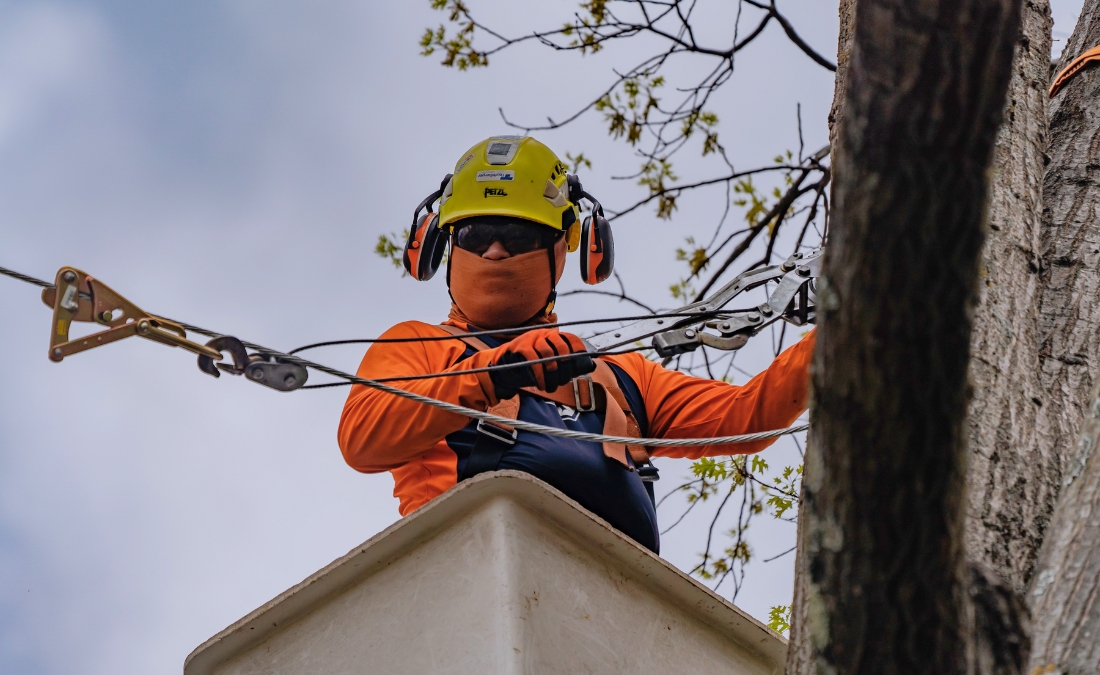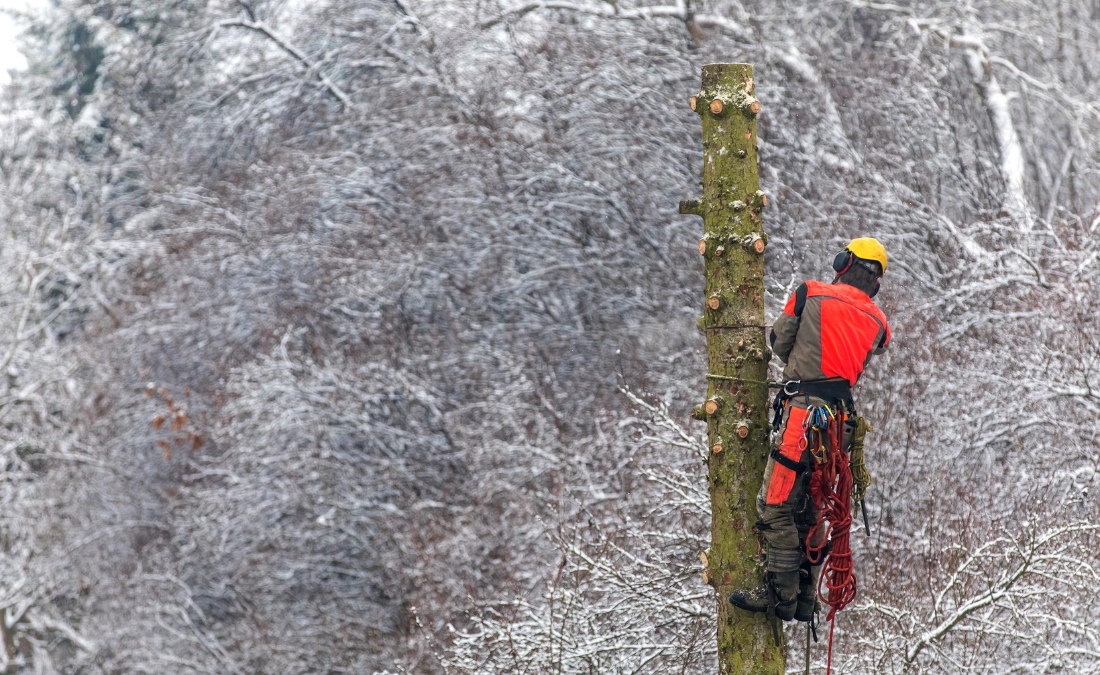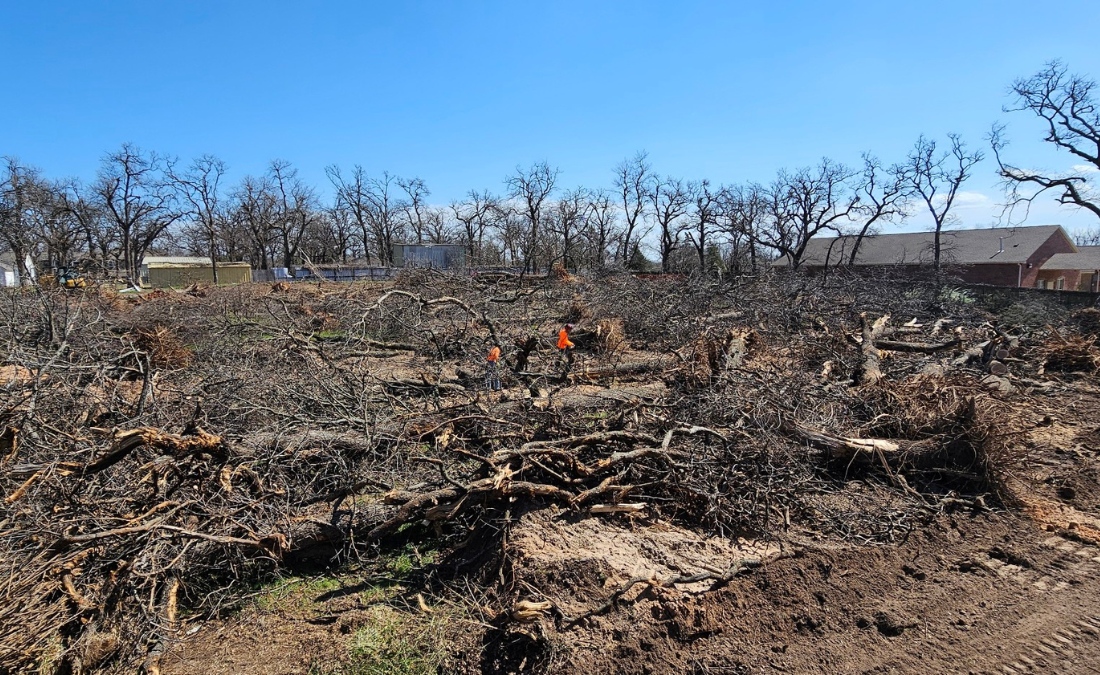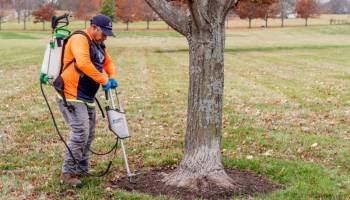The Hidden Dangers of Early Fall Tree Pruning in Oklahoma City
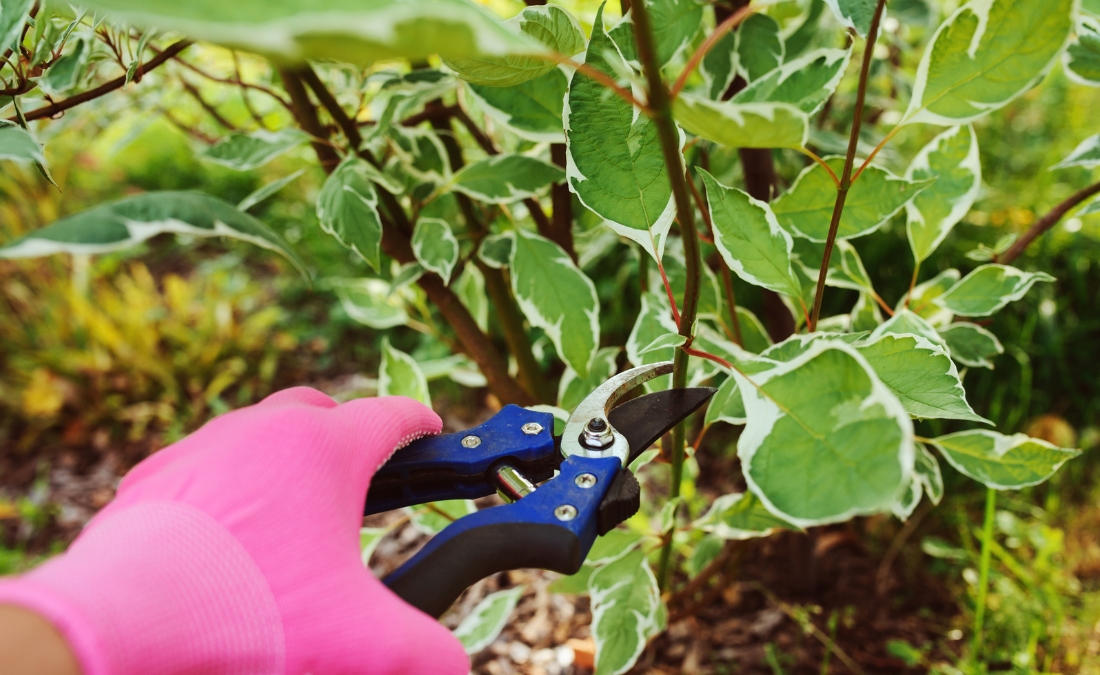
Fall tree pruning has risks if done too early in Oklahoma City. Learn the safe timing and the single exception for protecting your trees.
With Oklahoma City’s tree canopy coverage sitting at just 20-22% citywide, every tree in your yard is precious. Some neighborhoods, like those around Lake Hefner, have canopy coverage as low as 4.4%, making tree preservation critical. Yet many well-meaning property owners in Nichols Hills, Edmond, and Moore unknowingly put their trees at serious risk by pruning during the fall months.
While you might think any time is good for tree maintenance, pruning during this season can actually harm or kill your trees through increased disease susceptibility, disrupted winter preparation, and compromised healing ability.
Key Takeaways
- Fall pruning increases disease susceptibility when Oklahoma’s warm, humid conditions create ideal environments for infection.
- Pruning during this time disrupts trees’ natural dormancy preparation, leaving them vulnerable to winter damage and stress.
- Deadwood removal is the one safe exception and actually protects your Oklahoma City property from storm damage.
- Professional pruning with proper timing can help preserve Oklahoma City’s limited urban forest and your property investment.
- ISA Certified Arborists understand Oklahoma’s specific climate challenges and can assess your trees’ individual needs.
Why Early Fall Pruning Can Harm Your Trees
Oklahoma’s extended growing season creates unique challenges for tree care timing. When you prune trees during fall, you’re essentially forcing them to redirect energy from winter preparation back to wound healing and new growth.
As late summer turns to fall, trees naturally begin storing energy in their roots and trunk to survive winter dormancy. Pruning disrupts this critical process, leaving trees weakened and unprepared for temperature fluctuations. In Oklahoma City, where winter weather can swing from mild to severe rapidly, this preparation time is essential for tree survival.
The warm, humid conditions common in Oklahoma during early fall also create ideal environments for disease-causing organisms. Fresh pruning cuts act like open doors, inviting infections that can spread throughout the entire tree.
This timing becomes even more critical when you consider Oklahoma City’s low canopy coverage. With urbanized areas experiencing around 10% lower canopy than the city average, losing even one mature tree to preventable disease represents a significant loss to your property and the community. This is especially true in established neighborhoods like Mesta Park, Heritage Hills, and Crown Heights, where mature trees are irreplaceable community assets.

Saving major pruning for winter is vital for healthy, vigorous trees.
Why Timing Matters with Tree Pruning
Understanding why timing matters requires looking at how trees function throughout the year. During active growing seasons, trees focus energy on producing new leaves, extending branches, and photosynthesizing. This energy-intensive process leaves fewer resources available for wound healing and defense against pathogens.
In late summer and early fall, trees begin transitioning from growth mode to storage mode. They start moving sugars and starches from leaves down to roots and trunk tissue, building reserves for winter survival and next year’s spring growth. When you prune during this transition period, you force the tree to restart active growth processes to seal wounds and potentially replace lost foliage.
Critical Timing: Oklahoma’s extended growing season means trees may continue active growth well into September or October, depending on temperature and rainfall patterns. This prolonged vulnerability period increases the window when pruning can cause harm.
Fresh pruning cuts also require significant energy to compartmentalize, a process by which trees seal wounds to prevent decay and the spread of disease. During the fall, trees have reduced ability to form strong compartmentalization barriers, leaving them susceptible to infection for extended periods.

Dead branches, like the one pictured above, are a prime pruning target whenever you see them.
The One Pruning Exception: Deadwood Removal for Storm Safety
While live tissue pruning should be avoided during the fall, deadwood removal represents a critical exception to seasonal timing restrictions. Dead branches pose immediate safety hazards, and removing them provides only benefits to tree health and property protection.
Deadwood removal doesn’t trigger the same biological responses as live tissue pruning. Since dead branches no longer have active cambium or vascular systems, removing them doesn’t create wounds that require energy-intensive healing processes or provide disease entry points.
Storm Safety Priority: Recent November 2024 tornadoes caused widespread damage across the Oklahoma City metro, with areas like Choctaw, Harrah, and southeast Oklahoma City hit particularly hard. At least 39 structures were destroyed and dozens more damaged. Dead branches become projectiles during storms, making professional deadwood assessment and removal a year-round safety priority.
Professional assessment remains important even for deadwood removal. ISA Certified Arborists can distinguish between dead tissue that is safe for removal and stressed living tissue that should be left until the proper pruning season. They can also identify structural issues that might require emergency intervention regardless of the season.
Frequently Asked Questions
When is the best time to prune trees in Oklahoma City?
The optimal pruning window for most trees in Oklahoma City is during the dormant season, typically from December to February. During this period, trees have minimal energy demands, disease pressure is lowest, and wound healing can begin immediately when spring growth resumes. Some species may have specific timing requirements, so consulting with an ISA Certified Arborist ensures proper scheduling for your particular trees.
What should I do if my tree has storm damage in the fall?
Storm damage requires an immediate professional assessment, regardless of the season. Broken, hanging, or split branches pose safety hazards that outweigh seasonal pruning concerns. Contact a Certified Arborist immediately to evaluate damage and determine which cuts are necessary for safety versus which repairs can wait until proper pruning season.
Can I prune fruit trees differently than shade trees?
Fruit trees follow the same basic biological principles as shade trees, making them equally susceptible to fall pruning damage. However, fruit trees may require specialized timing for optimal production. Stone fruits, like peaches and plums, are particularly vulnerable to disease through fall cuts, while apple and pear trees face fire blight risks during warm, humid periods.
How can I tell if my tree has been damaged by improper pruning timing?
Signs of pruning damage may not appear immediately, but they can include delayed spring growth, dieback of pruned branches, unusual insect activity around cuts, fungal growth or discoloration near pruning wounds, and overall decline in tree vigor. If you notice these symptoms, a professional diagnosis can determine appropriate treatment options and prevent further damage.
Are there any trees that can safely be pruned in the fall?
While dormant season pruning remains safest for all species, some trees tolerate fall pruning better than others. However, given Oklahoma City’s low canopy coverage and the value of every mature tree, the conservative approach of dormant season pruning provides the best protection for your landscape investment.
What’s the difference between pruning and deadwood removal?
Pruning involves cutting living tissue, which triggers biological responses requiring energy and creating potential disease entry points. Deadwood removal eliminates already-dead material that poses safety hazards without creating wounds or stressing the tree. Professional arborists can distinguish between these different types of cuts and recommend appropriate timing for each.
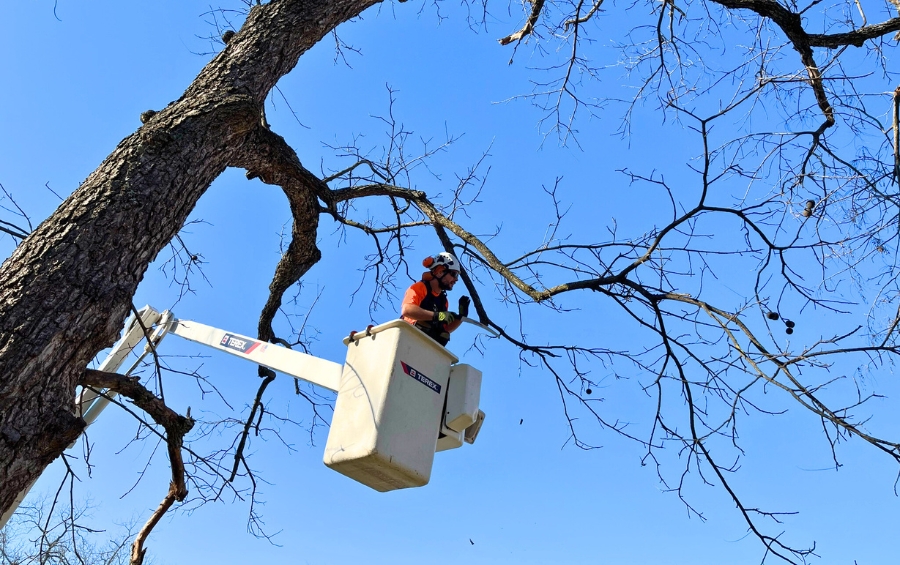
Professional dormant season pruning by ISA Certified Arborists is the safest time for maintaining tree health and reducing disease risk in Oklahoma City.
Schedule Your Winter Pruning and Deadwood Removal with Arbor Masters
While this might not be the best time to have a professional prune your trees, the perfect season is right around the corner. Winter is often the best time to perform professional pruning while your trees are dormant and have plenty of time to recover from the damage before the next summer arrives. The Arbor Masters schedule fills up quickly, so don’t wait to get in touch with us about winter pruning today.
Whether you need emergency deadwood removal to protect your property or want to schedule proper winter pruning for healthier trees, we’re here to help. Every tree matters in Oklahoma City’s limited urban forest, and proper timing can make the difference between a thriving tree and a costly loss.
Don’t risk losing valuable trees to preventable pruning damage or storm-related hazards. Contact Arbor Masters today at 405-495-8746 or request a free consultation to schedule your winter tree care services.

Get the latest local news, tree care tips, special offers, and company updates directly to your inbox! It's easy to subscribe and there's no spam - we promise.
"*" indicates required fields

